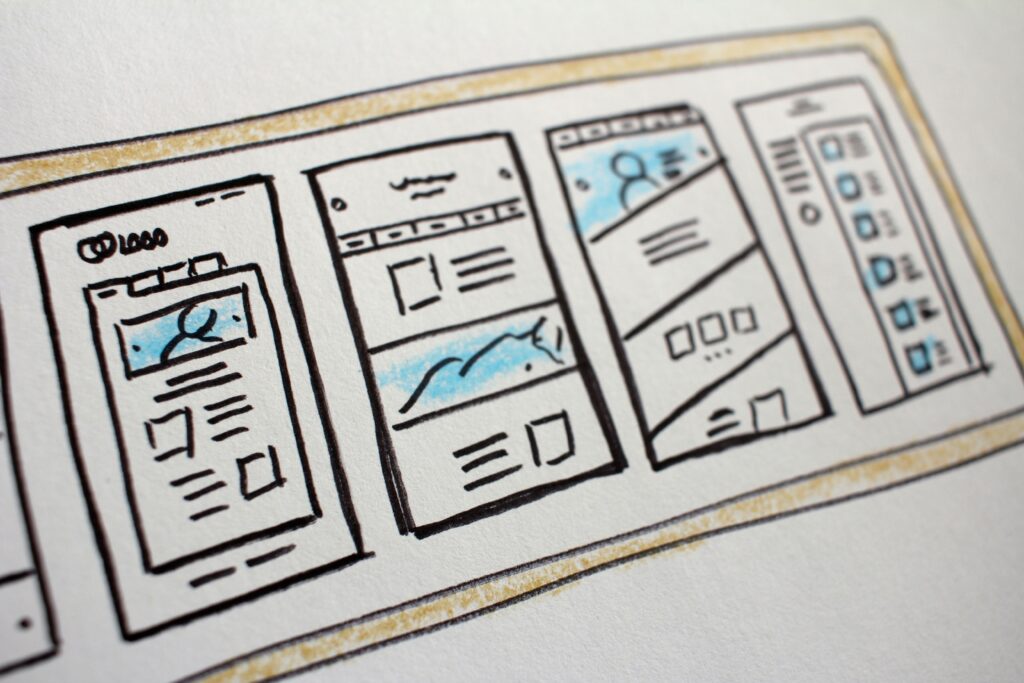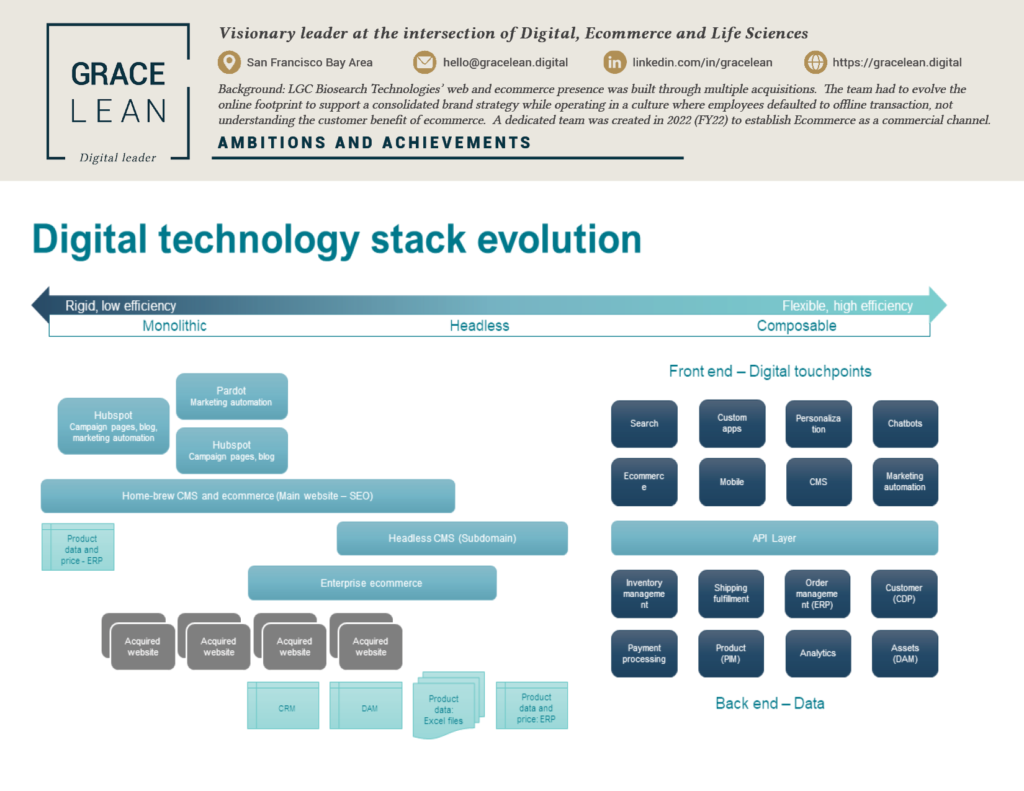Overview
Since 2015, LGC's Genomics division experienced rapid growth through acquisitions, integrating eight organizations into the division over seven years, each with its own website, some equipped with an Ecommerce platform. In 2018, senior leadership initiated a brand strategy to consolidate all brands under a unified portfolio brand, Biosearch Technologies. To execute this strategy, the team diligently retired legacy brands and websites, aiming for a singular domain and cohesive online presence.

Challenge
Despite acknowledging the necessity of migrating to an enterprise-level Ecommerce platform, there was a misconception that this action alone would resolve all website challenges. There was a lack of understanding regarding the importance of investing in a modern martech stack alongside the Ecommerce platform to ensure an optimal website experience. Additionally, the complexities of the legacy website, www.biosearchtech.com, posed significant obstacles, given its SEO priority and hosting our highest revenue-generating custom product line on a home-brew system. These factors collectively hindered the realization of our goal to achieve a single-domain state under the unified brand portfolio of Biosearch Technologies.
Approach
After numerous iterations, leadership changes, and the cultivation of trust among cross-functional teams over several years, the company arrived at an optimal solution. This solution emerged from a comprehensive process of lessons learned, close examination of industry best practices, and tapping into insights from both new team members and external agencies, and rigorous analysis of user behavior data.
Solution
To effectively retire all legacy websites, a robust SEO strategy is imperative. We need to ensure seamless transfer of search equity to our desired URL through meticulous management of keywords, redirects and canonical URLs.
Companies equipped with a dedicated marketing team empowered to oversee website experiences independently are poised for quicker delivery of optimal digital experiences for customers. Hence, platform usability, particularly for the CMS, must be intuitive and user-friendly, minimizing developer dependency for content creation.
Furthermore, as we transition towards a headless CMS approach, it's essential to recognize the rapid evolution within this architectural paradigm in recent years. Adopting a headless CMS is just the beginning; embracing a MACH (Microservices, API-first, Cloud-native, Headless) architecture is crucial for future-proofing. This approach lays the foundation for achieving composable commerce design, facilitating the launch of custom digital experiences—a pivotal and strategic component of the LGC Biosearch Technologies roadmap.
Outcome
We successfully retired seven websites and streamlined our operations to just two ecommerce platforms. As part of ongoing initiatives, we're working towards consolidating further to a single website and Ecommerce platform, aligning with the organization's unified brand strategy. Vigilant SEO monitoring, utilizing tools like SEMrush, ensures the preservation and transfer of search equity for critical keywords.
Although we retained two websites longer than ideal, we optimized the situation by implementing extensive cross-linking to create a coherent customer journey within technological constraints. View this infographic for a visual of this outcome so far.
Our next phase involves transitioning towards a headless, enterprise CMS, ideally with DXP capabilities complemented by CDP technology to enable hyper-personalization in the future. Each addition or change to the tech stack should always consider MACH architecture, ensuring our ecosystem is future-proofed for flexibility and accelerated growth.
Lessons Learned
- Educate Senior Leaders: Provide senior leaders with a basic understanding of technology to ensure informed decision-making.
- Financial Analysis: Conduct accurate data and financial analysis during the early stages of project planning to set realistic milestones and evaluate return on investment. Avoid underestimating costs or overestimating potential returns.
- Vendor Selection: During the vendor selection process, prioritize experience and expertise over cost. Ensure the selected vendor has a proven track record with similar projects and can deliver on promises. Beware of overselling and opt for vendors with demonstrable experience and references in line with your project requirements.
- Invest in Implementation: Recognize implementation, including refactoring and content migration, as a critical investment. Avoid assuming that the internal team can handle this task alone. Ensure the chosen implementation partner has prior experience with the selected platform to avoid delays and inefficiencies caused by on-the-job learning. Also make sure the extent of implementation is acceptable and meets business requirements.
- API-First Approach: Always prioritize an API-first, better yet MACH approach if your organization is reaching a certain level of complexity and sophistication. Shortcuts in development can lead to complications and inefficiencies down the line. Embrace a thorough and robust API-first strategy for long-term project success.







